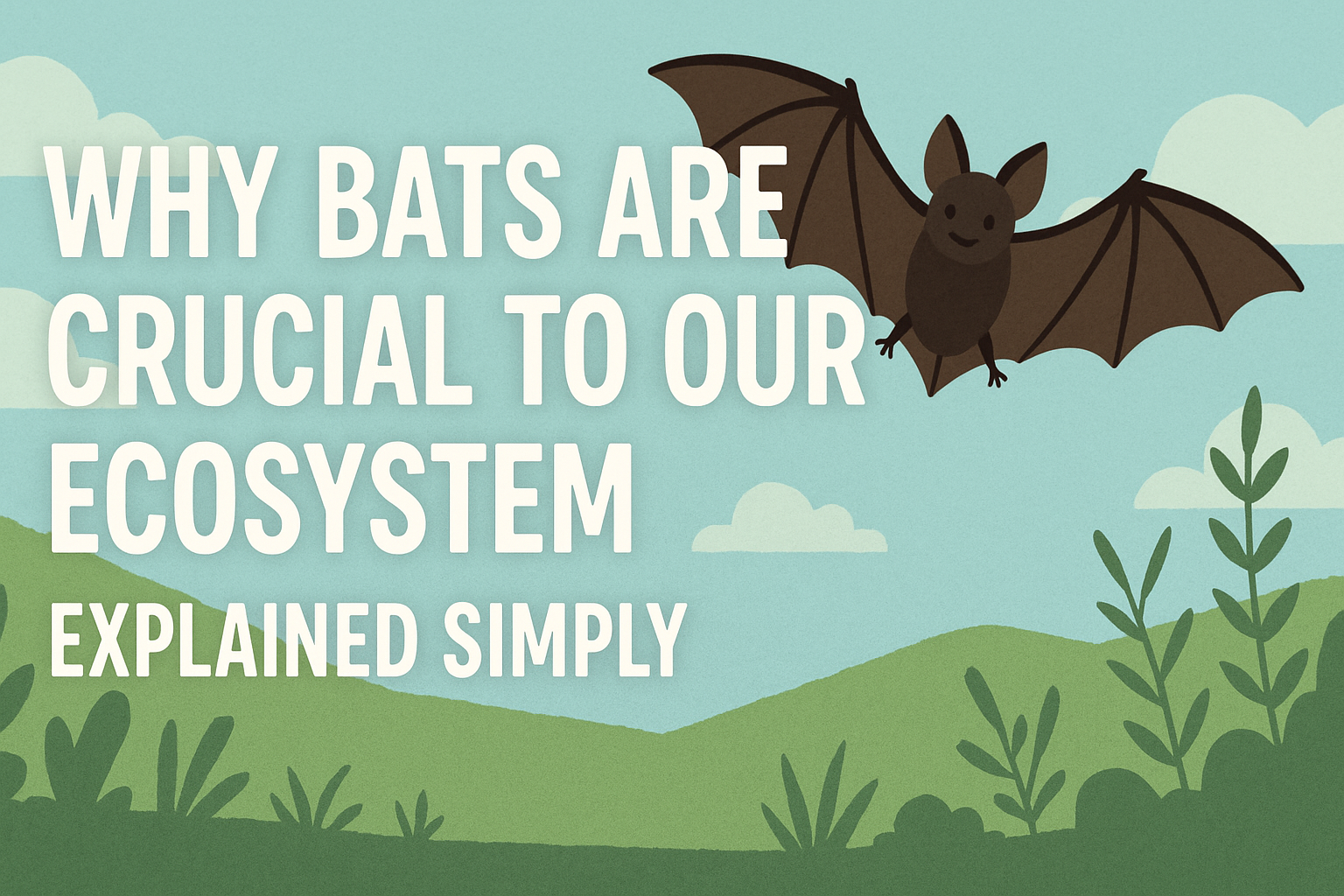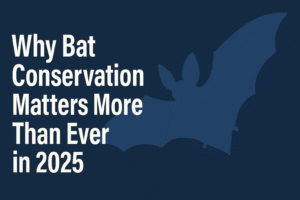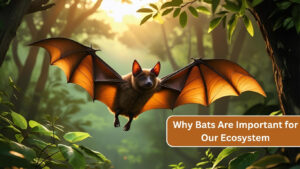You might not see them often, but trust me—bats are working overtime while you’re binge-watching Netflix or snoozing under your covers.
They’re silent, they’re fast, they look a little like flying mice (but cuter if you ask me), and they are hands down one of the most important animals in our ecosystem.
Yup. You read that right.
Bats = Unsung Environmental Superstars.
Let’s break it down nice and easy, like we’re chatting over coffee (or a moonlit walk through a forest). Here’s exactly why bats matter, and what the world would look like without them. Spoiler alert: you wouldn’t like it.
1. They Eat a Ridiculous Amount of Insects
Ever feel personally victimized by mosquitoes at a backyard BBQ?
Well, bats feel your pain—and then they do something about it.
Most bats (especially in North America) are insectivores, which means they eat bugs. A single bat can eat 1,000 insects in just one hour. Think about that. One tiny bat, gobbling down skeeters, moths, and crop-destroying pests like it’s an all-you-can-eat buffet.
Now imagine millions of bats doing this every night.
Without bats?
Pesticide use would skyrocket. Crops would suffer. You’d need to carry bug spray everywhere you go. It’d be itchy chaos.
2. They’re Excellent Pollinators (Like Bees, But Spookier)
In tropical and desert climates, bats do something amazing: they pollinate plants—just like bees and butterflies. Some species feed on nectar, and as they fly from flower to flower, they spread pollen around.
Some of the plants that rely on bats for pollination?
- Bananas
- Mangos
- Agave (yes, that’s where tequila comes from)
- Cacao (yup, chocolate. You’re welcome)
Without bats, the global supply of some of your favorite foods and drinks would be at risk.
So next time you sip a margarita or bite into a banana muffin, silently thank a bat.
3. They Help Spread Seeds
Certain fruit-eating bats play another crucial role: they’re seed dispersers.
After bats eat fruit, they fly off and, uh… release the seeds in other places. It’s like nature’s version of Amazon Prime—except bats are delivering seeds, not stuff.
This helps regrow forests, especially in areas damaged by deforestation or storms. Bats are often the first animals to re-enter cleared land, planting the seeds (literally) for a new ecosystem to grow.
No bats = fewer forests = hotter planet = not ideal.
4. They Inspire Science and Medicine
This one’s wild: bat biology is inspiring breakthroughs in medicine and tech.
- Bats rarely get cancer or suffer from inflammation the way humans do. Scientists are studying them to understand how we might one day treat chronic illnesses.
- Their echolocation has inspired sonar systems, hearing aids, and robotic guidance tech.
- Bat saliva (stay with me here) has even helped develop stroke treatments, because of how it prevents blood from clotting too quickly.
Weird? Sure. Useful? Extremely.
5. They’re Ecosystem Balancers
Bats keep the balance in multiple ecosystems—from forests to farms to cities. By eating pests, pollinating plants, and dispersing seeds, they maintain the natural cycle of things.
They also provide natural pest control, reducing the need for chemical pesticides. That means less pollution, healthier crops, and cleaner water.
They’re like a free, flying, eco-friendly pest management service.
And yet… most people don’t even notice them.
6. They’re in Danger (And We Need to Help)
Here’s the not-so-great part: bat populations are declining.
Big time.
Between habitat loss, climate change, and diseases like white-nose syndrome, many bat species are on the edge of extinction. This matters because when bats disappear, entire ecosystems start to unravel.
No bats?
More bugs.
Fewer crops.
Weaker forests.
A big, noisy mess.
“But aren’t bats dangerous?”
Let’s bust that myth real quick.
Yes, bats can carry diseases. So can raccoons, squirrels, dogs, and literally your uncle Steve if he doesn’t wash his hands. The reality is: bats don’t want to hurt you. They’re shy, gentle, and only bite if seriously provoked (so… don’t do that).
If you respect them, keep your distance, and avoid handling wild animals, you’re totally safe.
Also? Most bats don’t have rabies. In fact, you’re far more likely to get bitten by a mosquito (the real disease carriers) than a bat.
What YOU Can Do to Help Bats
If you’re sitting there thinking, “Okay, I care now. What next?”—good. Let’s talk action:
1. Build or Buy a Bat House
Give bats a safe place to live. You can install a bat house in your backyard and attract these insect-eating MVPs to your area.
2. Plant Night-Blooming Flowers
Certain flowers open at night and attract moths—aka bat snacks. Help feed the bats naturally!
3. Avoid Pesticides
The fewer chemicals in the environment, the better for all wildlife, including bats.
4. Dim Your Lights
Too much artificial light confuses bats. Try using soft outdoor lighting or turning them off when not needed.
5. Donate to Bat Conservation Orgs
Groups like Bat Conservation International and The Bat Conservation Trust do amazing work. Even a small donation helps.
6. Educate Others
Tell your friends. Share cool facts. Help fight the bad PR bats have gotten over the years.
Final Thoughts: Tiny Wings, Massive Impact
Bats might not be the fluffiest or most photogenic animals in the wild, but they are absolutely essential to life as we know it. From keeping bugs in check to helping your chocolate habit, they’re doing all the hard work while the world sleeps.
So the next time you see a shadow dart across the moon or hear fluttering in the dusk sky, don’t be spooked. Smile. That’s a bat, just doing its job, asking nothing in return.
Give ‘em some love.



